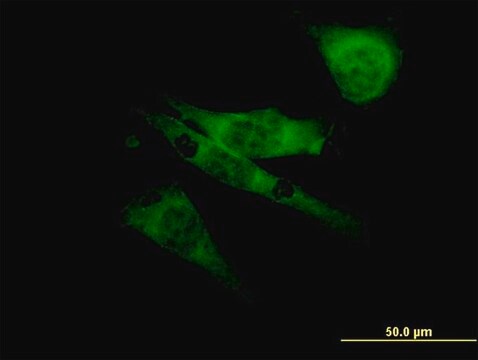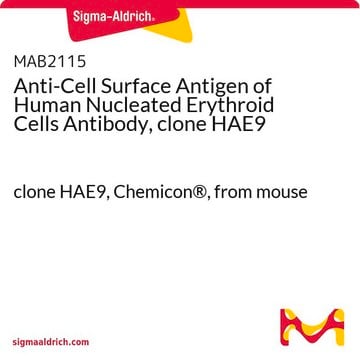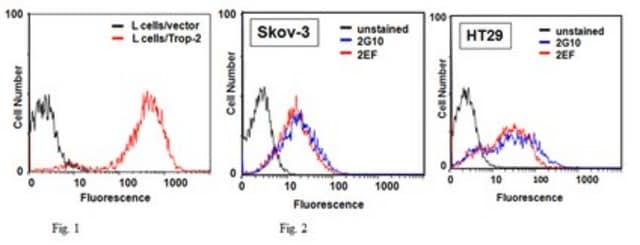MAB2081
Anti-β-Catenin Antibody, clone 5H10
clone 5H10, Chemicon®, from mouse
Synonim(y):
Anti-NEDSDV, Anti-armadillo, Anty-CTNNB, Anty-EVR7, Anty-MRD19
Wybierz wielkość
1750,00 zł
Przewidywany termin wysyłki25 kwietnia 2025Szczegóły
Wybierz wielkość
About This Item
1750,00 zł
Przewidywany termin wysyłki25 kwietnia 2025Szczegóły
Polecane produkty
pochodzenie biologiczne
mouse
Poziom jakości
forma przeciwciała
purified immunoglobulin
rodzaj przeciwciała
primary antibodies
klon
5H10, monoclonal
reaktywność gatunkowa
rat, human
producent / nazwa handlowa
Chemicon®
metody
immunocytochemistry: suitable
immunohistochemistry (formalin-fixed, paraffin-embedded sections): suitable
immunoprecipitation (IP): suitable
western blot: suitable
izotyp
IgG1
numer dostępu NCBI
numer dostępu UniProt
Warunki transportu
wet ice
docelowa modyfikacja potranslacyjna
unmodified
informacje o genach
human ... CTNNB1(1499)
rat ... Ctnnb1(84353)
Opis ogólny
Specyficzność
Immunogen
Zastosowanie
Immunohistochemistry on formalin fixed paraffin embedded tissues requires light fixations and citric acid/microwave antigen recovery for staining; In brief, sections of 2μm thickness were treated after deparaffinization with 0.3% hydrogen peroxide in methanol for 30 minutes to inhibit endogenous peroxidase and washed with TBS solution (Tris-buffered saline pH 7.6). To enhance antigen retrieval, sections were microwave-pretreated in 0.01 M citrate buffer solution at 750 W for a 3 minute-cycle period repeated three times; amplified detection methods are recommended.
Immunocytochemistry: Effective for A431 and HT1080 cell lines with acetone or methanol, or light PFA fixation.
Immunoblotting
Immunoprecipitation
Optimal working dilutions must be determined by end-user.
Epigenetics & Nuclear Function
Transcription Factors
Opis wartości docelowych
Powiązanie
Postać fizyczna
Przechowywanie i stabilność
Komentarz do analizy
A431 and HT1080 cell line extracts
Inne uwagi
Informacje prawne
Oświadczenie o zrzeczeniu się odpowiedzialności
Nie możesz znaleźć właściwego produktu?
Wypróbuj nasz Narzędzie selektora produktów.
polecane
Kod klasy składowania
10 - Combustible liquids
Klasa zagrożenia wodnego (WGK)
WGK 2
Temperatura zapłonu (°F)
Not applicable
Temperatura zapłonu (°C)
Not applicable
Certyfikaty analizy (CoA)
Poszukaj Certyfikaty analizy (CoA), wpisując numer partii/serii produktów. Numery serii i partii można znaleźć na etykiecie produktu po słowach „seria” lub „partia”.
Masz już ten produkt?
Dokumenty związane z niedawno zakupionymi produktami zostały zamieszczone w Bibliotece dokumentów.
Active Filters
Nasz zespół naukowców ma doświadczenie we wszystkich obszarach badań, w tym w naukach przyrodniczych, materiałoznawstwie, syntezie chemicznej, chromatografii, analityce i wielu innych dziedzinach.
Skontaktuj się z zespołem ds. pomocy technicznej








